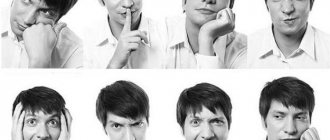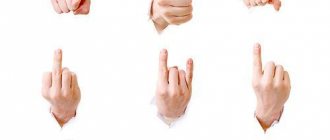Image. Branding. Author: Lyubov Elizarova
TO READ04 min. 33 sec.
VIEWS245
PUBLISHED 04-11-2019
- What is image?
- Goals and functions of image
- Image formation
- Types of image
- Formation of personal image
Rules for image formation in the modern world
First of all, you need to define the image, what it is. The concept of image is not only appearance, the ability to look good, to choose a hat for shoes and lipstick for a handbag, it is also the adequacy of reasoning, competent speech, and manner of communication. If attracting the opposite sex is important, then image and reputation will play a vital role. Not only among acquaintances, but also in the family, at work, in relation to older people, in love for the younger generation.
Each social class of society has its own idea of the concept of image
It is important to understand that your opinion may differ. Clothing, manner of speaking, demeanor, gestures, intonation of words and sentences are a great way for an employer or future spouse to form an opinion about you.
You need to start working on building your image and reputation with an adequate analysis of yourself and your capabilities.
A stylist will help you change your appearance, a makeup artist will tell you how to properly care for your skin and do the right makeup, a psychologist will help you accept yourself and your own “I”, a dance teacher will teach you how to move and walk correctly.
It’s never too late to change your image; it’s important to correctly assess yourself and the situation
What else you need to know about image formation
The image should be changed in accordance with the emerging changes in life.
If, for example, your social status has changed, then you should think about changing your clothing style. Sometimes your image needs to be changed in accordance with the dress code of the company you transferred to. Image and reputation are being reconsidered according to age
It is important to know that if you do everything right, the impression you will make will be positive. The element of uniqueness in creating your image should always be present
Image and reputation are not isolated from each other.
The main condition for achieving professional success is the constant activity of a person’s inner world, continuous work on oneself, on one’s spiritual development. Just as people train their body and pump up their muscles, it is also necessary to train their memory, ability to think and analyze. First of all, books will help here. Professional and fiction literature not only preserves knowledge, but also teaches how to think, increasing competence and positive productivity. Professionalism implies confidence and the ability to control the situation. Together with economic success, professional and career success provide a person with a high social status.
The social status itself is determined by age, education, profession, position, prestige, material security, personal freedom, level of legal and moral security, career and personal prospects.
Socio-psychological analysis of image
The concept of image with a high degree of confidence can be called an interdisciplinary concept, since its formation occurred in many sciences simultaneously, generalizing knowledge in accordance with the goals and objectives of each science. At the beginning of the twentieth century, the process of formation of this concept was studied mainly by psychologists and sociologists.
A person today, in the twenty-first century, living in a new information society, is valuable only as an individual capable of self-expression and having undeniable success in all areas of his life. At the same time, the individual expression of each person occurs increasingly with the help of information technologies: social networks and virtual communication. Live human communication in this case is simply replaced by symbolic communication for the purpose of exchanging information.
The roles that a person performs every day in the family, at work or in a cafe also become symbolic. A certain image and reputation of an individual are created depending on the environment in which a person has to be on a daily basis.
A person, mainly due to the influence of the media, has formed his own idea of the concept of image. This is the image of a person through the eyes of other people, a whole range of stereotypes attached to our personality in people’s minds, as well as our idea of ourselves, which in one way or another can be transmitted to others; a person's overall image on social networks and his attractiveness to other people, read through “likes” on his social network profile.
Changing your image: where to start
Not everyone can afford to hire an image maker to choose the perfect image. As a rule, when it comes to changing your image, the first thing that comes to mind is changing your hairstyle. Yes, indeed, even a new haircut can change a person’s appearance by 180 degrees, but if we are talking about the general concept of “image,” then going to the hairdresser is only one of the possible stages in the pursuit of the ideal picture.
A radical change of image: the main stages of transformation.
Changing your hairstyle - this could be a shorter haircut or changing the shape of your bangs. You can even change by curling your curls, or, conversely, by straightening your hair. Hair coloring is often used - these can be dramatic changes, for example, dyeing a blonde a brunette or choosing a different shade of hair, using tinting. Changing the style of clothing is also considered an integral part of changing the image: street style clothing changes to a classic suit. Or aggressive colors are introduced into a soft romantic image. Clothing is selected depending on the goal that a person pursues when deciding to transform. Makeup also has a huge impact on the visual portrait of the hostess. Aggressive makeup is associated with fearlessness and passion. Pastel-colored cosmetics suit sophisticated people who know their worth
It is important to understand that make-up is not considered as a tool for a radical change in image, but rather as an adjustment of an old style to a more current one. In this matter, it is best to contact a specialist; only a professional will be able to choose the ideal image that is suitable for all occasions. Changing your image can also include physical changes: losing weight, honing your ideal figure in the gym, adjusting your menu and changing your overall lifestyle.
Of course, this only applies to those who have decided to make drastic changes.
To give a full assessment of your metamorphoses, experts advise creating a separate folder “Image change: before and after” for monitoring and subsequent comparison of the change of appearance.
Functions and mechanisms of individual image
The basis for the emergence of an image at the dawn of human civilization, writes E. B. Perelygina, is the need to imitate other members of the tribe. Typical behavior had to be copied quickly and accurately - this was the key to survival.
I. A. Fedorov identified several main functions of image [3]:
- Training. When a person creates an image, he can consciously or unconsciously adjust his behavior.
- Illusory-compensatory. An individual image allows you to “play” with dreams and fantasies and brighten up everyday life.
- Social recognition function. This or that image allows you to quickly demonstrate your belonging to a particular social unit.
Moreover, in some cases, conditions are possible in which the image is absent. These are mental disorders, sleep, programmed behavior (for example, in a state of hypnosis). Since the image is created in the process of social communication, a person who is not capable of it is at the same time not capable of creating a full-fledged individual image [3].
For example, a mentally ill person loses his own social role. His ability to create one or another individual image is limited to the same extent as his ability to social interaction is limited.
It is interesting that the opposite state, which is also characterized by a significant weakening of efforts to create an image, is inherent in people literally located at the opposite pole - namely, self-actualizing individuals, as A. Maslow defined them. If their image is not completely lacking, it is at least significantly weakened. E. B. Perelygina connects this with the fact that self-actualizing individuals have a number of special qualities (autonomy, freshness of perception, the presence of peak experiences...), among which two play a special role in creating an image. Firstly, they are weakly influenced by society. And secondly, self-actualizing individuals do not have the desire to make efforts to form an image, since there is no need for this.
Therefore, in the context of a psychiatric diagnosis or a case of a self-actualizing personality, the image is a negative personal characteristic [3].
Purpose of image in life
It is important for a person to win over people, no matter what he does. To run a business, to defend a dissertation or an important project, to find a husband or to shop in a store - everywhere it is important to be able to make a good impression and win people over.
Without this skill it is truly impossible to achieve outstanding success. Therefore, it is so important to know what an image is and, if necessary, to be able to change the image.
Specialists work on creating the image: makeup artists, psychologists, dance teachers and yoga trainers, PR people and marketers, producers and sociologists, speech therapists and stylists. There are schools where they teach how to correctly achieve what you want using the visual effect of a person. Practicing psychologists conduct training in such schools. In addition to the visual component, they will teach you a correct understanding of the world and self-image, talk about ways to accept yourself and increase the attractiveness of a person’s inner appearance.
Today there is a new profession - image maker. This professional will tell you how you can change your image to achieve maximum success at work, when running a company or when managing household affairs. Also, famous people can resort to the services of this specialist in order to form a scandalous image of themselves.
Image makers advise accepting your outer shell (image) as a means to achieve your plans. Every day you need to be well dressed in public, neatly combed, with the right makeup, behave adequately, watch your words, gestures and even gait. That is, his reputation must be conscious and thought out to such small details as, for example, clothing, accessories, greetings, topics of conversation, attitude towards other people, everyday positive mood and gratitude.
For company managers it can also be energy, steadfastness, for subordinate employees - punctuality, for housewives - caring, etc. Then the person will make a good impression. And he will be successful in all plans and affairs, and not just in personal relationships.
What is image?
They say you can't make a first impression a second time. The idea of a person is created in the very first moments of acquaintance and does not change throughout the entire time. Is this really so and how to make the right impression, as well as find the image that best presents all the best qualities that a person possesses? To do this, you can create your own image.
It is not for nothing that when translated from English, “image” means “image” or “representation ,” which exactly conveys the meaning of this word. A person’s image does not always reflect his inner, true personality qualities. Sometimes it is radically different from a person’s true face and is only a carefully thought-out “mask” and includes non-existent qualities. This is the “picture”, the impression of a person that appears in the thoughts of other people when they mention him. Proper positioning and demonstrating your best qualities is not an easy job. Therefore, in order to form one’s own image, which is especially important for public people, the PR service and image makers play a significant role. Their tasks include creating a positive, interesting image, which serves as a good help for business development, career advancement, increasing popularity or solving other equally important social problems. Nowadays, information on image and services for its creation are available and necessary for almost everyone.
Formation of habitual image
Since the starting point for perceiving an image is the appearance, maximum attention must be paid to the visual component. Creating a high-quality residential image involves two options:
- independent work;
- professional help from an image maker.
When planning to make a positive impression, it is important to remember the need to match the residential image with the expectations of the target audience. To achieve success, you need to be associated with a certain social group, instilling trust and a positive attitude.
Whatever the image, the unshakable rule of its formation is neatness and grooming. Carelessness or signs of untidiness give a good reason to doubt a person’s personal qualities. And as you know, it can be very difficult to correct the first impression later.
Definition and rules
What is image? These are emotions, the response of strangers to the appearance of a particular individual, that is, the emotions caused by him and his clothes, the feelings that the image of a certain person awakens in other people.
There are four rules of image:
- first, do not show your confusion and sadness;
- second, control the tone of communication, both real and virtual;
- third, don’t forget to share your achievements;
- fourth - present your image favorably.
WHAT IS STATUS COMPOSED OF?
Our genes, upbringing, and environment - everything participates in the formation of status. It is affected by both what does not depend on us and what we can change.
Physical data is important: a taller, stronger and more attractive person has a higher status. The ratio of facial width to length matters: the larger this indicator, the higher the testosterone level. Such men are more aggressive, stronger and financially luckier than long-faced men. Women are more likely to agree to a second date with such a person.
Some social theories say that people increase their status in a group by producing important benefits for everyone rather than by aggression. However, the acquisition of high status is facilitated by a threatening appearance, despite the fact that this has no connection with the public good.
Extroverts have a better chance of achieving high status than introverts. Neuroticism is negatively correlated with status in men: they “shouldn’t” feel fear, doubt and sadness. Even a beautiful name plays a role in increasing status: the chances of getting a job for a person with a good-sounding first and last name are many times greater than for a person with a dissonant one. The education of parents and their attitude towards the education of their children also influences: the presence of books in the home of a teenager at 14 years old predicts his future status, university studies and the number of years of education.
RAT STATUS
Didier Desor, an experimenter from the laboratory of biological behavior at the University of Nancy, decided to find out how power is distributed in the rat community.
The scientist placed six animals in one cage, leaving them the only way to the feeder with food - through a pool of water. Soon the roles in the group were divided into two exploiters who had never swum at all, two exploited swimmers, one independent swimmer and one non-swimming scapegoat. The rats were fed according to their ranks. The miners dived into the water and brought food. The exploiters took away the food, the rest got the leftovers after the “feast”. An independent individual was strong enough to get food and defend it. Everyone beat the scapegoat, and he was content with food, which the other rats refused.
The experiment was repeated in 20 cells, and everywhere such a hierarchy was built automatically.
It is curious that, no matter how animals of different social roles mixed, the status order did not change. Researchers from the University of Nancy continued the experiment by examining the brains of the subjects. An amazing thing was discovered - dominants experience the greatest stress. The fear of losing status and privileges deprives them of a quiet life.
Finally, luck matters a lot. We all know influential people who, if they please, can turn us into dust with the wave of their little finger, and we see that they are small in stature, puny and not distinguished by intelligence. They were simply lucky, because nothing in their lives could have predicted such a meteoric rise.
Status exists in the eyes of other group members and is worth something as long as the power associated with it is real. Would we fear and respect Kim Jong-un if he showed up at our neighborhood supermarket and jumped the line? However, if we were in North Korea, we would have to reckon with his status or lose our lives.
What is the image like?
Types of image depend on the object itself:
- Private - is formed purposefully or spontaneously and is determined by the perception of others.
- The image of a media person is mandatory for business relationships and plays an important role in professional success;
- The image of a company is what distinguishes it from its competitors, attracts customers to it and then makes them permanent. Image has a significant impact on sales;
- Brand image - associations and image of a certain product that arise in the consumer when mentioning this brand;
- The image of a nation is an ethnic identity in close connection with historical and cultural heritage. For example, it is believed that Germans love order and precision, while the French are fine connoisseurs of beauty and fashion.
Activity as a component of image
The image of an activity includes the analysis of a specific type of activity in order to create the most effective image. Such components as the focus of the activity, the knowledge and skills necessary for its implementation, the perceptions and requirements of society for a specific type of activity are taken into account. By type of activity, the following types of image can be distinguished:
- image of the organization (PR technologies, reputation);
- personal image (divided into the image of specialists, politicians and show business);
- territorial image (housing, recreation areas, areas of economic activity);
- social image (promotion of various ideas, ideologies).
External and internal image of the individual
When it comes to a person’s appearance, the first thing we pay attention to is his physique: whether he is thin or plump, tall or short. For example, thin people of small stature may seem weak and inexperienced, so image makers will offer them more formal clothing and demeanor
People have long emphasized their position in society and their status with the help of clothing and accessories. The main principle in their selection, which image makers must adhere to, is that the appearance of the person whose image they are working on must correspond to the circumstances and ideas of the people for whom the image is being “sculpted” about the positive. He should look like “one of their own” to them.
And vice versa, with its appearance it should not evoke distrust or negativity in people’s subconscious. For example, it is unlikely that a politician’s words will be taken seriously if he looks like a rock star when speaking from a high podium. A politician who comes to a meeting with pensioners in expensive branded clothing will also cause a negative impression.
A prerequisite for a positive image is beautiful speech (rich vocabulary, absence of reservations, filler words), and mastery of oratory. In addition, when forming a verbal image, one must not forget about the educational level of the audience. It would be a mistake to speak too abstrusely or try to pass yourself off as “one of our own” by resorting to slang.
The attitude towards the audience is expressed even in such a seemingly trifle as the ability to introduce yourself. Those who pronounce first their last name and then their first and patronymic involuntarily express their superiority, increasing their own status. By first identifying yourself by your first name and patronymic, a person will show that he is friendly and ready to cooperate.
The essence of a nonverbal image is that information about a person is perceived at a subconscious level based on the postures, gestures, and facial expressions he takes. And here image makers have something to work on, because even a successful phrase can take on a negative meaning if it is accompanied by an inappropriate gesture or facial expression.
The internal image will tell you how a person positions himself. For example, for a politician who must arouse the sympathy of voters and win elections, image makers create the image of a strong and self-confident leader, energetic and assertive, who at the same time “is not alien to anything human” - he loves sports, supports his favorite team, He has a loving relationship with his wife and he adores his children.
Individual image and communication of information
With regard to the transmission of information, the individual image belongs to the category of so-called peripheral key stimuli. During communication, stimuli of this kind are located on the periphery - they are not directly related to the content of the message. However, peripheral key stimuli have a key impact on the recipient's perception of information.
Philip Zimbardo also wrote that if the source of information does not evoke sympathy among the audience, then the message will cause a negative reaction, and vice versa [5].
“This interpretation is clearly illustrated by the cognitive reactions listed by college students after receiving the message. They claimed that they were more interested in information that was read out by a speaker than when they heard the same information presented as a written message—and that their thoughts about it were more positive when the person delivering the message was was nice to them" [5].
Many experiments have demonstrated that the relationship between the parties to communication has a direct impact on the perception of information. For example, N.N. Bogomolova showed that the audience’s attitude towards presenters on television channels consists of two main components - the relationship between the communicator and his message, as well as the relationship between the communicator and his audience [3].
Image of the organization
Various types of image of an organization are united by a combination of internal, external and business qualities of the company. They are made up of eight components:
- Image of a product (service): people’s ideas about the unique characteristics inherent in a product.
- Image of product consumers: demonstrates the status and character of consumers.
- Internal image of the organization: reflects the culture of the organization.
- The image of the founder and main leaders of the organization: is characterized by ideas about the personal qualities, abilities and intentions of the founder or leader, formed on the basis of perceptible parameters: behavior, actions, appearance and activities of the leader.
- Personnel image: reflects the image of the personnel with their characteristic features.
- Visual image of the organization: reflects information about the office building, its interior, the appearance of the staff, and corporate symbols.
- Social image of the organization: characterizes the organization’s participation in the social and cultural life of society, the organization of environmental and social programs.
- Business image of the organization: characterizes the organization as a subject of a certain activity, having a business reputation, business activity and the degree of development of innovative technologies.
Image making
Image making is a type of activity aimed at forming and managing the image of an object. In the literature, image making is sometimes called a communication technology. Image making allows you to distinguish an object from many similar ones, forming a certain attitude towards it in people.
Image making objects
Objects whose rating depends on the image created by them or for them
This category includes individuals (for example, politicians, TV presenters, leaders of social movements), radio and television programs, social movements. The purpose of these objects is to influence the mood in society.
Objects whose rating depends on their image and the goods and services they produce
Here we can note large national and transnational corporations. Their goal is to increase sales volumes, as well as simultaneously improve the quality of products sold and improve their image.
Objects for which image changes are not a fundamental factor in their success
These are various small businesses whose success depends directly on the quality of their goods and services.
Image making tools
There are many image-making methods depending on the category of the object. The most extensive list of techniques applies to objects whose rating depends on the image and on the quality of their products or services, since image-making actions need to mask their true goals, showing ingenuity.
Verbalization
This technology involves a vivid description of the situation. Verbalization is used to express the new context of a situation and escape reality.
Positioning
Initially, positioning was developed to promote products on the market
By positioning, the image maker places the object in a favorable environment for it and focuses the audience’s attention on its unique features. Positioning highlights in an object those characteristics in which the consumer is interested.
Manipulation
Here the audience's attention is transferred to another object in order to create the desired situation. The uniqueness of the created object should outshine the object that is relevant to the client.
Mythologization
Mythologization affects the audience on a subconscious level. The task of a myth is to activate vivid ideas about an object in a direction beneficial to the image.
Emotionalization
Emotionally charged information is more easily perceived by a person, therefore, to achieve the desired effect, it is necessary to correctly correlate the rational and emotional components of the impact.
From the history of image making
Image-making techniques have been known since the times of Ancient Greece. For example, Pharaoh Akhenaten and his famous sun-worshipping coup. The campaign was organized according to all the rules of modern PR. The main image maker of the campaign, priest Ey, divided its implementation into several stages. First, the introduction of the name of the sun god Aten into the litulature of the pharaoh, which, in essence, was the “positioning” of the idea. Then - the transfer of the capital to another place and its dedication to Aten, which was determined by the impossibility of carrying out a new idea in an old place, permeated with ancient traditions. This was followed by the introduction of the cult of the solar disk throughout Egypt. And finally, when, according to the organizers of this campaign, the population was ready - a ban on the cult of the old gods. Unfortunately, the introduction of monotheism in Ancient Egypt failed. After the death of the pharaoh, which followed in the 33rd year of his life, Egypt returned to the old gods, since social needs were not taken into account, and the specifics of the Egyptian mentality were not sufficiently worked out.
Levels of image perception
The second difference between an image and just an image is sustainability. People in general are changeable objects, therefore ordinary perceptual images are situational, mobile, they arise instantly and constantly change depending on a person’s movements, changes in facial expression, posture, timbre of voice, gestures, etc. But the image consists only of the stable characteristics of the individual, those what makes him a unique, unrepeatable personality. In psychology, there are 3 groups of such characteristics depending on the level of human perception:
- The biological level is age, gender, health status, features of the course of nervous processes, physical data, etc.
- Psychological – level of intelligence, character traits, characteristics of the emotional sphere, interests, tastes, creativity, etc.
- The social level includes information about a person that is spread by other people: rumors, gossip, attitudes, etc.
Of course, the stability of an image is relative; it can change, even quite consciously. In addition, over time, a certain attitude towards a person develops, under whose influence the image is corrected. For example, a young man with many tattoos and piercings can be an excellent professional, although he was not initially perceived as such.
Perfumery
A person is associated, first of all, with smell. As Jean-Paul Guerlain says: “Perfume is the most intense form of memory.” They emphasize a person’s individuality and give his appearance uniqueness and sophistication.
Perfume is an integral part of the image. When choosing perfume, you must take into account that you should not only like the smell, but also match the image you have chosen. It is necessary to correlate the smell with your character, temperament, mood, clothing style, and age.
Perfume is a means of not only attracting attention to oneself. They are often used as a means of seduction, since they are capable of capturing the power of the senses and creating an inexplicable attraction. The power of their influence is enormous, and with the right choice, their possibilities are endless.
The magic of perfumery is the ability of specialists working in this field to recreate almost any smell. On store shelves you can find perfume products with the smell of blooming gardens, the aroma of steppe herbs or exotic plants, as well as the smell of a sea breeze.
Perfume smells affect your mood; they can either improve or ruin it. A poorly chosen scent can cause headaches or awaken distant negative memories with which it is associated. A skillfully selected perfume scent brings joy and improves your mood.
Object image
The image of an object is an opinion of a rational or emotional nature about an object (person, object, system), which arose in the psyche of a group of people based on the image formed in their psyche as a result of their perception of certain characteristics of this object. For example:
A business image is specifically designed in the interests of a person or company, taking into account the specifics of the activity, internal and external qualities.
The image of an object depends on its actions, behavior or qualities, if such an object is a product or service. An assessment of the image of an object that has arisen in a person (in the most general form, the assessment of “good” - “bad”) may have an emotional connotation (“like” - “dislike”), or may not have an emotional attitude, but only a rational one (“good” - “not good”). Public attitude towards an object is more subject to emotional communication. Logical argumentation can be easily destroyed by a successful emotional message.
State image
The invariant core of the category under consideration should be considered a dichotomy: the internal image of the state (for citizens) - the external image of the state (for the world community). On the other hand, the category “state image” combines a number of relevant image categories: “image of women”, “image of youth”, “image of older people”. Each of the categories reflects the characteristics of the internal and external images of the state. All components of such a complexly organized category as “state image” are in close interaction and dynamics and are subject to continuous transformations.
The appearance of a state and its reputation are often based on elements of myth and generalized stereotypes about an ethnic group. The share of such “myths” in politics is large. Thinking with stereotypes is characteristic of human psychology; the use of clichés allows you to save effort in orienting yourself in the surrounding reality and simplifies the process of cognition. But stereotypes most often cause colossal damage to a country’s image.
Image of the organization
The image of an organization can be defined as a formed, effective, emotionally charged image of an organization or its individual components, endowed with certain characteristics based on real or ascribed perceptual properties of a particular organization that have social significance for the perceiver.
There is also an opinion in the literature that the content of the concept of an organization’s image should include two components:
- the information component, which is the totality of all ideas about the organization;
- the evaluative component, which represents the public attitude towards the organization
Factors influencing the formation of a positive image:
- Financial situation of the organization.
- History of the organization, company, its tradition and reputation.
- Personality of the leader.
- Publicity - advertising fame.
- Caring for staff.
- Social responsibility to society.
- Organization management.
- Form style.
- Ethical activities and relationships.
Goals and functions of image
Image has certain ultimate goals, and they are different for everyone. This:
- Formation of a positive and trusting attitude towards you in society. Showcasing the best qualities and hiding the worst.
- Psychological correction of personality. A correctly created image increases self-confidence, increasing the individual’s sociability).
- Reputation. Creating a positive or negative, but attention-grabbing assessment of society.
- Advancement up the career ladder due to the required qualities and dress code.
- Success with the opposite sex, increased external and internal attractiveness.
Lady and business
Achieving success in the world of big business and politics is very difficult, especially for the fairer sex, so an attractive appearance becomes an additional advantage. So what is the image of a business woman and what does it consist of?
The most popular and successful image was developed by American image makers back in the 50s: at first this style was demonstrated by the first ladies of states, then the fashion for it spread to all layers of working women. Margaret Thatcher, Nancy Reagan, Hilary Clinton, Elvira Nabiullina are vivid examples of what the correct image of a business woman should be.
We recommend: How to change for the better?
The image should be created comprehensively, avoiding excessive softness or hardness, finding a balance between the external appearance and the inner world of a woman. The image and style of clothing should be thought out to the smallest detail and harmoniously complement each other: for example, a formal business suit can be decorated with cute but stylish accessories. Heavy and expensive jewelry, excessively bright makeup, short skirts, deep necklines are taboos, as they cause mixed reactions from people.
A business image requires not only a suit, good shoes, proper makeup, but also the presence of manners and knowledge of business etiquette. The main rule is to be natural; any falsehood will be perceived as an attempt to deceive and will cause distrust in you as a specialist. Don't try to play the role of a successful person - just be one.
Behavioral image means complete control of your body, from your gait to the slightest movement of your eyebrows. You should not cross your legs or fidget during a conversation - this will be perceived as a desire to end the conversation. The interlocutor will instinctively consider his arms crossed on his chest as distrust of him or excessive isolation. Do not laugh without reason or use ambiguous hints - this can seriously damage your reputation.
External image of a business person
Surely you know the saying “You are greeted by your clothes, but you are seen off by your mind.” When creating a business image, it is more relevant than ever. An image can determine the course of a conversation in any situation and save time on creating a favorable impression.
Business people use a little secret; at various presentations, speeches and negotiations, they adhere to the rule: “The speaker should always look a little better than his listeners.” This is true! You can achieve attention and proper respect for yourself only by feeling your superiority.
The following details make up the image of a business person:
- High-quality wardrobe from branded items;
- Pleasant physical shape;
- Well-groomed appearance – hair, hands, nails;
- Flawless makeup;
- Discreet hairstyle;
- Branded accessories.
You can identify an expensive suit from hundreds of others, right? High-quality branded clothing is distinguished by a strict silhouette, high-quality materials and relevance. A well-groomed body and tidy hair indicate external and internal emotional restraint; excellent physical shape indicates the presence of willpower and the desire to strive for a better result.
How to change a girl's image: doing hair
Curls grow quickly, so you can safely experiment with them. If you don't like the result, you will correct it in a few months.
To change your image, experts recommend haircuts and hair coloring. Where to begin? Perhaps the first thing you need to do is shape your hair. To do this, contact a good specialist who will select the optimal haircut model. It should be not only beautiful, but also comfortable. Initially, think about whether individual strands will interfere with you, choose a comfortable hair length.
A successful hairstyle should be easy to style. You may leave the hair salon looking like a princess, but what good is that if after the first wash your hair looks like a haystack?
If you are not ready for such a drastic decision as a haircut, perhaps you should just change your hairstyle a little. If you always wore bangs, try pinning them up nicely. You can also experiment with braids. Beautiful weaving is always in fashion. It suits many girls.
You can find a large number of new interesting hairstyles on the Internet. Watch the video, experiment and enjoy the successful results.
Let's move on to coloring. It should be noted right away that it is better to change your hair color in a salon that specializes in this. A good hairdresser will quickly determine which shade suits you, and which, on the contrary, ages or emphasizes skin imperfections
It is important that the person you contact knows the hair coloring technology perfectly and follows it exactly. This will eliminate the possibility of burns or irritation during the procedure.
Choose a new color gradually. Try going a few shades lighter or darker. You can also apply balayage.
Be careful with dark brown. It greatly emphasizes all the imperfections of the facial skin. You only need to repaint this color if you have perfect coats.
Sometimes natural hair color looks best. In this case, there is no need to change it at all; you can limit yourself to a haircut and good makeup.
In addition, you should also think about updating your wardrobe. You can buy clothes that you have always liked, but were embarrassed to wear. Why should you give up what appeals to you? You have one life, look beautiful and be happy. We hope that our article was useful to you.
How to create an attractive image
Image is an image; it differs from reputation in that it is earned, but an image is created. And creating an image is not an easy task, since you need to consider perception at all three levels. If a low level of intelligence can be hidden or disguised for some time, character traits can be “edited” and corresponding rumors can be spread, then what about, for example, gender, height or physique.
We must also take into account the perception, experience and sphere of interests of those people whom we want to impress. Taking into account all the difficulties of image formation, famous or, as they say, media personalities (politicians, actors, large businessmen) have their own image specialists - professional image makers. But they are also wrong. So, in the 90s, Boris Yeltsin, no less than on the advice of such specialists, began to smile. It would be better if he didn't do this. On a face whose muscles were not accustomed to such a facial movement, the smile resembled a crooked grimace.
An ordinary person does not have image makers, and he should first figure out what makes us more attractive in the eyes of other people.
Attractive factors
A person exists and communicates in a variety of social groups, and accordingly, his success will depend on different sets of qualities. To have an attractive image in a group of friends who are fond of sports, you need some qualities, but to promote your own construction company – completely different ones. But there are still general parameters by which we evaluate people, and attractiveness factors that are common to all.
beauty
No matter how much we are told that the main thing in a person is business qualities, decency and intelligence, and not physical attractiveness, external data still plays a very important role. We unconsciously endow a beautiful person with the best features and try to ignore his shortcomings. We trust beautiful people more; we strive to interact with them, to be close to them, as if we are sure that we too will get a “piece” of this beauty given from above. By the way, the same reaction is to the manifestation of health, which is considered an important condition for external attractiveness. We like healthy people more than sick people.
But what to do if a person does not have outstanding external data? Their absence can be compensated by correctly chosen clothing, makeup, signs of inner strength, confidence and physical health, as well as openness and goodwill in communication. A sincere smile makes any person more beautiful. And in general, there is a very correct women's saying, which is attributed to the founder of a chain of cosmetic stores, Elena Rubinstein: “There are no ugly women, there are only lazy ones.”
Similarities
Psychologists' studies have shown that we trust people who are somewhat similar to us more. Moreover, we are talking not only about external similarity, but also about related interests or the absence of age difference. As soon as we understand that the interlocutor is interested in the same thing that we are, his attractiveness instantly increases, as well as interest in him.
In groups of different ages, people close in age communicate more often and are intuitively wary of both older people and younger people. Belonging to one social group, youth community, or fan club increases attractiveness.
It is interesting that attractiveness is influenced even by the proximity of origin, the places where they spent their childhood and youth. People who come from the same area, and even more so who graduated from the same university or school, quickly develop sympathy for each other.
Halo effect (halo effect)
It takes a lot of time to get to know a person’s personal qualities in their entirety. But it often happens that some bright and attractive feature catches the eye: physical beauty, erudition, self-confidence, eloquence. And this trait creates a kind of halo effect, coloring the perception of the individual as a whole. It is by this that we evaluate a partner.
The halo effect also works in the case when some factor is not directly related to the individual, but seems to accompany him. Thus, a military uniform creates an aura of masculinity, while a shocking hairstyle creates an aura of frivolity. And if a stranger is represented by a person we respect, then respect creates an aura around this person.
Infantile appearance
It would seem that we should trust adults more, but one of the factors of attractiveness is childish appearance. Features such as large eyes and a protruding mouth, a small nose, puffy lips and a fragile physique create an image that is associated with a child. And we begin to experience unconscious trust, sympathy and desire to help this person. Studies have shown that people who look somewhat like children are perceived as non-threatening, defenseless, sincere and pleasant.
This feature of perception has a very ancient nature and is inherent even in animals, which often protect and care for not only their own, but also other people’s young.











